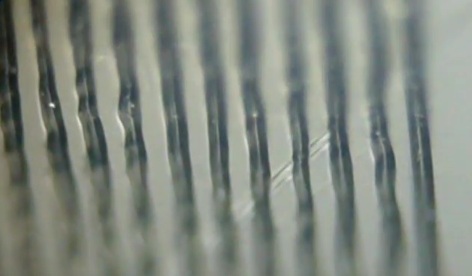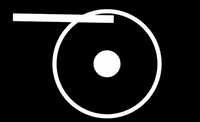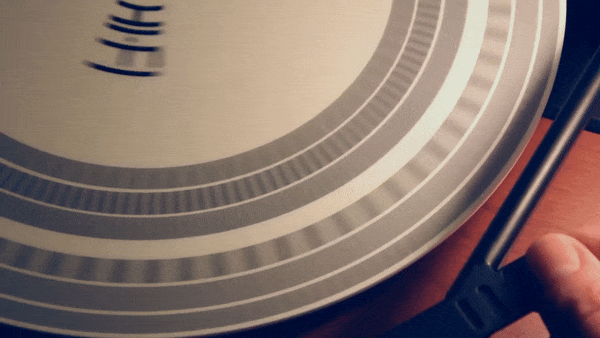Well, the 33 vs 45 vs 78 RPM vinyl record comparison is a very hot topic in the vinyl world, and yet, a satisfactory answer has not been found until now.
Last month, my friend, who had just entered the vinyl world, was keen to know the difference between these records, but even after doing a lot of research, he couldn’t find any satisfactory answer.
He read many articles and forums in which people compared these records and shared their preferences and the pros and cons of each record. Some people even said that 45s sound better than 33s, but didn’t share the facts supporting their answer.
When I met him a few days back, he casually brought up this topic in our conversation and shared the trouble he faced to get the answer, but still didn’t get the satisfaction, which inspired me to write an article on this topic.
Considering the whole vinyl community, he is not alone. Many people often get confused between these records and want to know the differences, which also triggers another question: Which record sounds better, and which record should I buy if an album is available on both 33s and 45s?
So, in this article, you will get answers to all your questions. I have compared all three records based on real facts, and, most importantly, I have explained everything in the easiest way possible.
So, let’s start.
33⅓ vs 45 vs 78 RPM – Difference
| 33⅓ RPM | 45 RPM | 78 RPM | |
|---|---|---|---|
| Sizes | 12-inch and 10-inch | 7-inch and 12-inch | 10-inch |
| Music playback time (per side) | Up to 25 minutes | Up to 7 minutes | Up to 5 minutes |
| Sound quality | Good | Best | Not good |
| Material | Vinyl | Vinyl | Shellac |
| Scratch resistant | No | No | Yes |
| Grooves | Narrow | Wider | Wider than EPs and LPs |
| Durability | Durable | Durable | Fragile |
| Prone to warping | Yes | Yes | No |
| Used for | Singles and albums | Singles | Singles and albums |
| Stylus compatibility | All modern-day styluses work fine | All modern-day styluses work fine | Thorn, fiber, or steel stylus on gramophones and a conical tip on turntables. |
| Other names | Long-playing or LPs | Extended play or EPs | Standard play, SPs, or Shellac records |
| Released on | June 1948 by Columbia Records | March 31, 1949, by RCA Victor | 1889 by Emile Berliner |
So, this is a brief comparison between these different types of records. Now, let’s understand everything in detail.
Comparison between 33⅓ LPs, 45 EPs, And 78 SPs
For better understanding, I have divided the comparison into five different aspects, and in each aspect, I have shared my views and facts.
Speed & Sound Quality
In vinyl records, RPM (revolutions per minute) specifies the speed, which means all three records are named according to their speed.
The 33⅓ means that the record spins and completes 33⅓ revolutions in a minute on your turntable. Similarly, 45s complete 45 revolutions per minute, and 78s complete 78 revolutions per minute.
This is very simple to understand, but the real question is- does the speed difference in the record matter? Which record speed offers the best sound quality? Does 45s sound better than 33s and 78s?
The answer is yes, the speed of the record matters, and 45 RPM vinyl records have better sound quality than 33⅓ and 78 RPM records.
But what’s the reason behind it?
Well, a debate is still going on about these questions, and today, instead of sharing my personal preference, I will talk about the real facts and end this never-ending debate.
Why does 45 RPM sound better than 33⅓ RPM and 78 RPM?
The reason why 45 vinyl records sound better than 33 and 78 is the groove spacing and the speed.
Now, let’s dig deeper and understand the concept of groove spacing and speed.
Groove Spacing

LPs have narrow grooves to fit more music on the record, but EPs have wider grooves, which means more space for additional audio information or music.
This additional space can have higher frequencies, resulting in better sound reproduction, enhanced sound clarity, and better dynamic range.
On the other hand, along with narrow grooves, LP’s grooves are engraved as close as possible on the record to make longer playback possible. Due to this, the frequencies of the original recording are compressed more when stamping is done on 33s than on 45s, and this additional compression affects the sound quality of LPs. This low-frequency compression is also one of the reasons why bass on 45s sounds better than 33s.
There is one more technical term you must have heard about, i.e., inner groove distortion, and groove spacing is one of the main reasons behind inner groove distortion on 33s.
According to Dr. Dub Vinyl (vinyl records manufacturer), on 33RPM records, comparing the outer grooves with the inner grooves, the inner grooves are compressed by a factor of 2.5 due to less space available in the middle and end of the record.

Due to this groove compression, the stylus couldn’t catch the audio signals properly, resulting in distortion. As your tonearm gets closer to the record’s end, you will start losing the high-end frequencies.
This groove compression is also a reason why some hi-fi records keep the record label bigger and avoid creating grooves near the record’s center.
Talking about 78s, the groove spacing is even wider than EPs, but their sound quality is nowhere near that of LPs or EPs.
Well, SPs were manufactured in the mid-20th century, and it is quite obvious that technology was not as evolved as it is right now.
Although their sound quality is amazing for their time but if you compare 78s with 33s and 45s now, the sound quality of 78s is comparatively very bad.
Speed

The faster speed means the stylus is reading more data in less time, i.e., more information per inch, which results in better sound reproduction and enhances overall sound quality.
And, talking about 78s, the sound quality is nowhere near modern-day vinyl records, despite their speed being faster than 33s and 45s.
Playback Time
As I explained above, the narrow grooves help to fit more music into the record, and since 33s have comparably narrower grooves, you get better playback, i.e., up to 25 minutes of music per side.
The 45s have wider grooves, so the manufacturers can’t fit much music on the record, resulting in reduced playback time. The 7-inch 45s have a playback time of up to 7 minutes, while 12-inch 45s have a playback time of up to 18 minutes.
The 78s have even wider grooves than 45s and, as a result, less playback time, i.e., up to 5 minutes.
Well, record manufacturers can always tweak the groove placement as near as possible to increase the playback time on any record, but sound quality will take a hit.
When I shop for records while choosing 33s, I prefer a record having a maximum of 21-22 minutes of playback per side, and while choosing 45s, I prefer 15-16 minutes of playback per side. This preference is for 12-inch records only.
Durability
The 78s are made with fragile shellac material. If you drop it, the record will be shattered into pieces. On the other hand, vinyl records won’t break that easily, but they are more prone to warping and can get scratched easily.
Well, you can fix record warp easily, but it is difficult to fix scratches onthe record.
In my opinion, vinyl records are more durable than shellac records.
Stylus compatibility
The 33 and 45 records are compatible with all the modern-day styli. On the other hand, 78s records need a special stylus. If you play 78 RPM records on the gramophone, you need to use a thorn, fiber, or steel stylus, but on modern turntables or record players, your cartridge needs to have a conical tip stylus; otherwise, your record and stylus both will get damaged.
Which one is better – 33, 45, or 78?
33s have more playback time as compared to 33s and 78s, which means you don’t have to change or flip the record every 5-6 minutes, and you can enjoy uninterrupted music for up to 25 minutes.
Well, 33s additional playback time is a trade-off with sound quality, but the difference is not huge.
In most cases, I prefer 33 because, once I get the stylus running over the record, I don’t have to come and flip the record before 20-25 minutes, but sometimes, when I want to listen to specific singles that have deeper bass and loudness, I prefer 45s.
For me, 33s are more convenient, but 45s are more enjoyable.
If an album is available in both 33⅓ and 45 RPM, I always prefer buying a 12-inch 45 RPM.
One more interesting fact, there is one popular forum on the internet, i.e., Steve Hoffman’s forum, where they had conducted a poll to know the user preference, and this is the result:

Well, I know the votes are fewer, but it shows what the vinyl community prefers.
So, in the end, it’s all about personal choice.
I hope you understand the difference between LPs, EPs, and SPs. Now, let’s hear your thoughts. Do comment your thoughts below and also tell me, which record you prefer to buy and play.



I also noticed lost highs near the record end. Is there anything we can do avoid it?
Hi Newton,
Microlinear stylus and perfect cartridge alignment can help.
I recently bought a 45 RPM single after purchasing the Neo power supply for my Rega Planar 3, which makes it easy to change speeds. I was pleasantly surprised by the sound quality, which I thought was at least slightly better than most 33 RPM LPs. The improvement in dynamics, bass, and mids was very noticeable. Maybe this was because I was actually expecting 45 RPM sound quality to be inferior but I think the improvement I heard was real. This article explains why. And you get more exercise when you have to change the record every three or four minutes.
Hi Armand, I loved your approach to playback time. Many people complain about changing records every 5 to 7 minutes, but you’re one of the few people I know who took it positively.